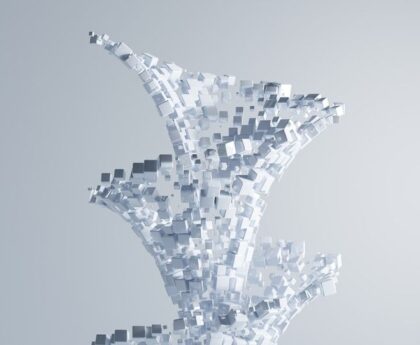Chinese Scientists Successfully Synthesize Magnetic Levitation-Enabled LK-99 Crystal
The Experiment and its Implications
Chinese scientists have made a significant breakthrough in the field of superconductivity with the successful synthesis of the LK-99 crystal, which exhibits magnetic levitation properties. Led by Professor Chang Haixin from the School of Materials Science and Technology at Huazhong University of Science and Technology, the team released a video on social media showcasing the crystal’s magnetic levitation capabilities. This achievement surpasses the previous efforts of a South Korean team and is expected to have profound implications for non-contact superconducting magnetic levitation.
The LK-99 crystal, a modified perovskite crystal structure with copper doping, has garnered attention due to its potential as a room-temperature superconducting material. The discovery of such a material would revolutionize various industries, including energy, transportation, computing, and medical diagnostics. Room-temperature superconductivity, with its ability to enable long-distance lossless power transmission, could lead to a new wave of global infrastructure development in the electricity network. Furthermore, breakthroughs in superconducting magnets, cables, and maglev trains are anticipated.
The South Korean Controversy
Before the Chinese team’s achievement, a research team from South Korea claimed to have discovered the “world’s first room-temperature superconducting material.” However, they faced skepticism due to a lack of experimental data to support their claim. The synthesis of LK-99 by the Chinese team and subsequent attempts by other research teams worldwide to verify the results indicate the scientific community’s interest in this groundbreaking development.
It is important to note that the Chinese team has only verified the Meissner effect with the LK-99 crystal. While it exhibits diamagnetism, its overall behavior resembles that of a semiconductor rather than a superconductor. The publisher of the video suggests that any superconducting properties of LK-99 are likely present in trace amounts of superconducting impurities, incapable of forming a continuous superconducting path.
The Quest for Room-Temperature Superconductivity
The discovery of a room-temperature superconducting material has long been the Holy Grail of physics. Traditional superconductors require extremely low temperatures, often close to absolute zero, to exhibit zero electrical resistance. The realization of room-temperature superconductivity would revolutionize various technologies, making them more efficient and sustainable.
The theoretical calculations conducted by researchers from the Institute of Metal Research, Chinese Academy of Sciences, suggest the possibility of room-temperature superconductivity with LK-99. However, these calculations do not serve as definitive proof. Experimental tests conducted by another research team at Beihang University indicate that LK-99 does not exhibit zero resistance at room temperature and does not display any magnetic levitation properties.
Philosophical Discussion: The Promises and Challenges of Scientific Exploration
The pursuit of scientific knowledge is often fraught with challenges and uncertainties. Scientific breakthroughs, such as the synthesis of the LK-99 crystal, capture the imagination and hold the potential for groundbreaking applications. However, it is essential to maintain a critical and cautious approach, especially when claims of paradigm-shifting discoveries emerge. The scientific method demands rigorous experimentation, reproducibility, and verifiable results. Publications of experimental data and peer review are crucial in establishing the credibility of scientific advancements.
The recent controversies surrounding the claims of room-temperature superconductivity highlight the complexity of scientific exploration. While the potential benefits of such a discovery cannot be understated, it is crucial to separate overzealous expectations from reality. The scientific community must remain vigilant and encourage further research, verification, and replication of experiments to ensure the robustness of these claims.
Editorial: The Importance of International Collaboration
Scientific advancements that hold the potential to bring about revolutionary changes transcending national boundaries necessitate international collaboration. The pursuit of knowledge and technological progress should be a collective enterprise. In the case of room-temperature superconductivity, researchers from various countries have embarked on synthesizing the LK-99 crystal to verify the experimental results obtained thus far.
International collaboration can facilitate the exchange of ideas, resources, and expertise, promoting a holistic and comprehensive approach to scientific exploration. By combining the talents and perspectives of researchers from diverse backgrounds, the scientific community can foster innovation and achieve breakthroughs with greater certainty. Sharing data, conducting joint experiments, and engaging in constructive discourse can accelerate the pace of discovery and ensure greater reliability in scientific advancements.
Advice: Balancing Optimism and Skepticism
As the global community eagerly anticipates the possibility of room-temperature superconductivity, it is essential to strike a balance between optimism and skepticism. Scientific progress is not a linear trajectory but a process of trial and error, refinement, and verification. It is important to celebrate the achievements made thus far while maintaining a critical eye.
Publications, such as the recent video released by the Chinese team, provide valuable insights and spark scientific discourse. However, they should be viewed as a starting point for further investigation rather than definitive proof. Scientists, policymakers, and the general public should approach these claims with skepticism, encouraging further research and collaboration to ascertain the validity of the findings.
In conclusion, the synthesis of the LK-99 crystal by Chinese scientists represents a significant step forward in the quest for room-temperature superconductivity. While the full potential of this material is yet to be realized, it offers a glimpse into the future of energy, transportation, computing, and medical diagnostics. International collaboration, a critical eye, and a commitment to rigorous experimentation will be essential in navigating the complexities and uncertainties of scientific exploration.

<< photo by Vincent M.A. Janssen >>
The image is for illustrative purposes only and does not depict the actual situation.




